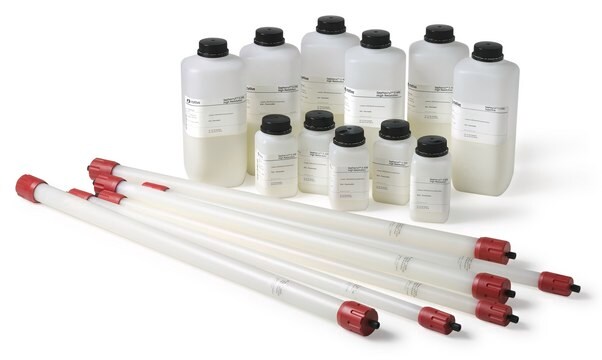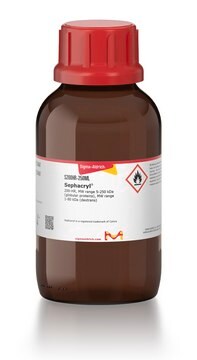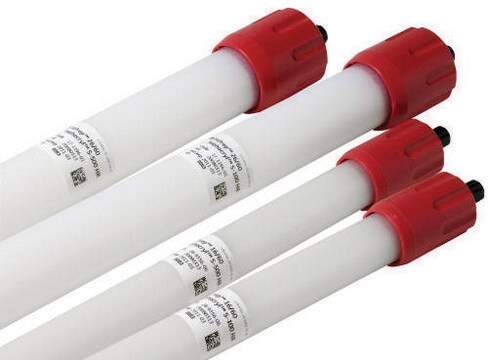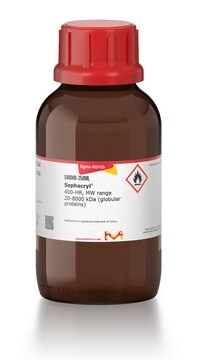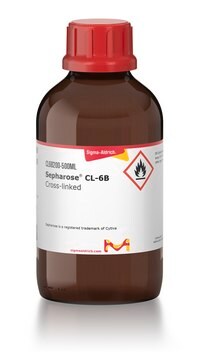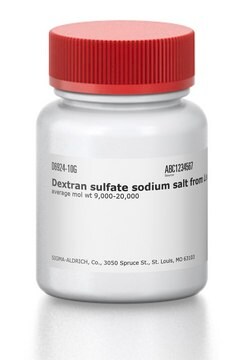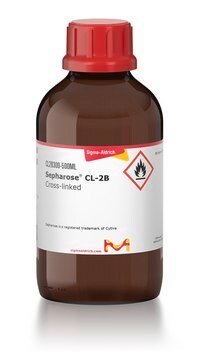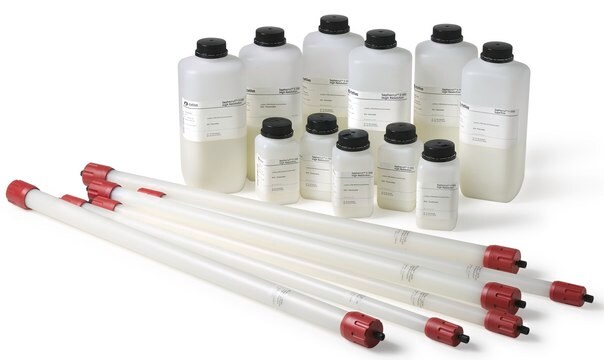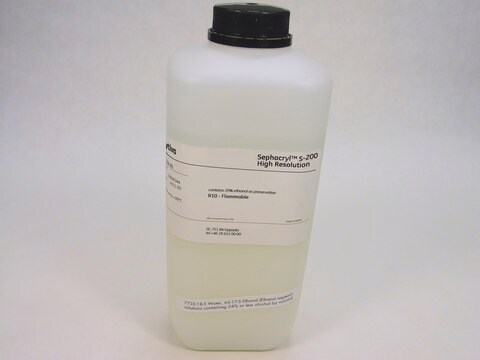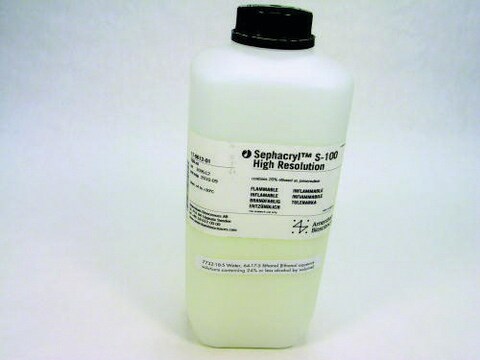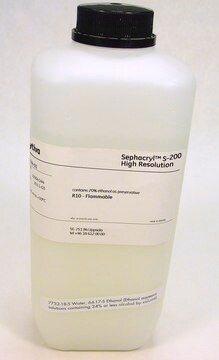S500HR
Sephacryl® Size Exclusion Resin
500-HR, MW range 40-20,000 kDa (dextrans)
Sinónimos:
Poly([allyl dextran]-co-N,N′-methylenebisacrylamide)
About This Item
Productos recomendados
Nombre del producto
Sephacryl®, 500-HR, MW range 40-20,000 kDa (dextrans)
descripción
stability: stable to 0.2M NaOH
Formulario
suspension (20% aqueous ethanol)
Características
autoclavable
Matriz
crosslinked allyl dextran/N,N′-methylenebisacrylamide copolymer
tamaño de partícula
25-75 μm (wet)
tamaño de poro
40-20,000 kDa MW range (dextrans)
compatibilidad
mode of use size exclusion chromatography
temp. de almacenamiento
2-8°C
¿Está buscando productos similares? Visita Guía de comparación de productos
Descripción general
- Supplied swollen, suspended in 20% aqueous ethanol
- Autoclavable
- Stable to 0.2N sodium hydroxide (NaOH)
- Store at refrigerated temperature (2-8 °C)
Aplicación
Información legal
Palabra de señalización
Warning
Frases de peligro
Consejos de prudencia
Clasificaciones de peligro
Flam. Liq. 3
Código de clase de almacenamiento
3 - Flammable liquids
Clase de riesgo para el agua (WGK)
WGK 1
Punto de inflamabilidad (°F)
100.4 - 109.4 °F - closed cup
Punto de inflamabilidad (°C)
38 - 43 °C - closed cup
Equipo de protección personal
Eyeshields, Faceshields, Gloves, type ABEK (EN14387) respirator filter
Elija entre una de las versiones más recientes:
¿Ya tiene este producto?
Encuentre la documentación para los productos que ha comprado recientemente en la Biblioteca de documentos.
Los clientes también vieron
Nuestro equipo de científicos tiene experiencia en todas las áreas de investigación: Ciencias de la vida, Ciencia de los materiales, Síntesis química, Cromatografía, Analítica y muchas otras.
Póngase en contacto con el Servicio técnico